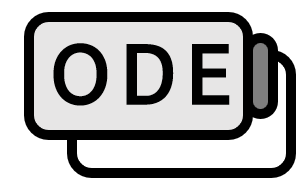Definition and Examples of Differential Equations
Definition
A differential equation is an equation that includes derivatives of one or more dependent variables with respect to one or more independent variables.
$$ \dfrac{dy}{dx}=y $$
$$ \dfrac{d^2y}{dx^2} = y $$
Explanation
Most physical situations can be described by first-order or second-order differential equations.
Falling Body
$$ F=ma=mg $$
$$ v=\dfrac{dy}{dt} $$
$$ a=\dfrac{dv}{dt}=\dfrac{d}{dt} \left( \dfrac{dy}{dt} \right)=\dfrac{d^2y}{dt^2} $$
$$ \dfrac{d^2y}{dt^2}=g $$
Spring Mass System
$$ F=ma=-ky $$
$$ a= -\dfrac{k}{m}y $$
$$ \dfrac{d^2y}{dt^2}=-\dfrac{k}{m}y $$
$$ \dfrac{d^2y}{dt^2}+\dfrac{k}{m}y=0 $$
When this is referred to as $ w^2=\dfrac{k}{m}$, then,
$$ \dfrac{d^2y}{dt^2}+w^2y=0 $$
RLC Circuit
$$ L\dfrac{d^2q}{dt^2}+R\dfrac{dq}{dt}+\dfrac{1}{c}q=V(t) $$
Schroedinger Equation
$$ i\hbar \dfrac{\partial \psi}{\partial t}=-\dfrac{\hbar^2 }{2m} \dfrac{\partial^2 \psi}{\partial x^2} + u(x)\psi $$
